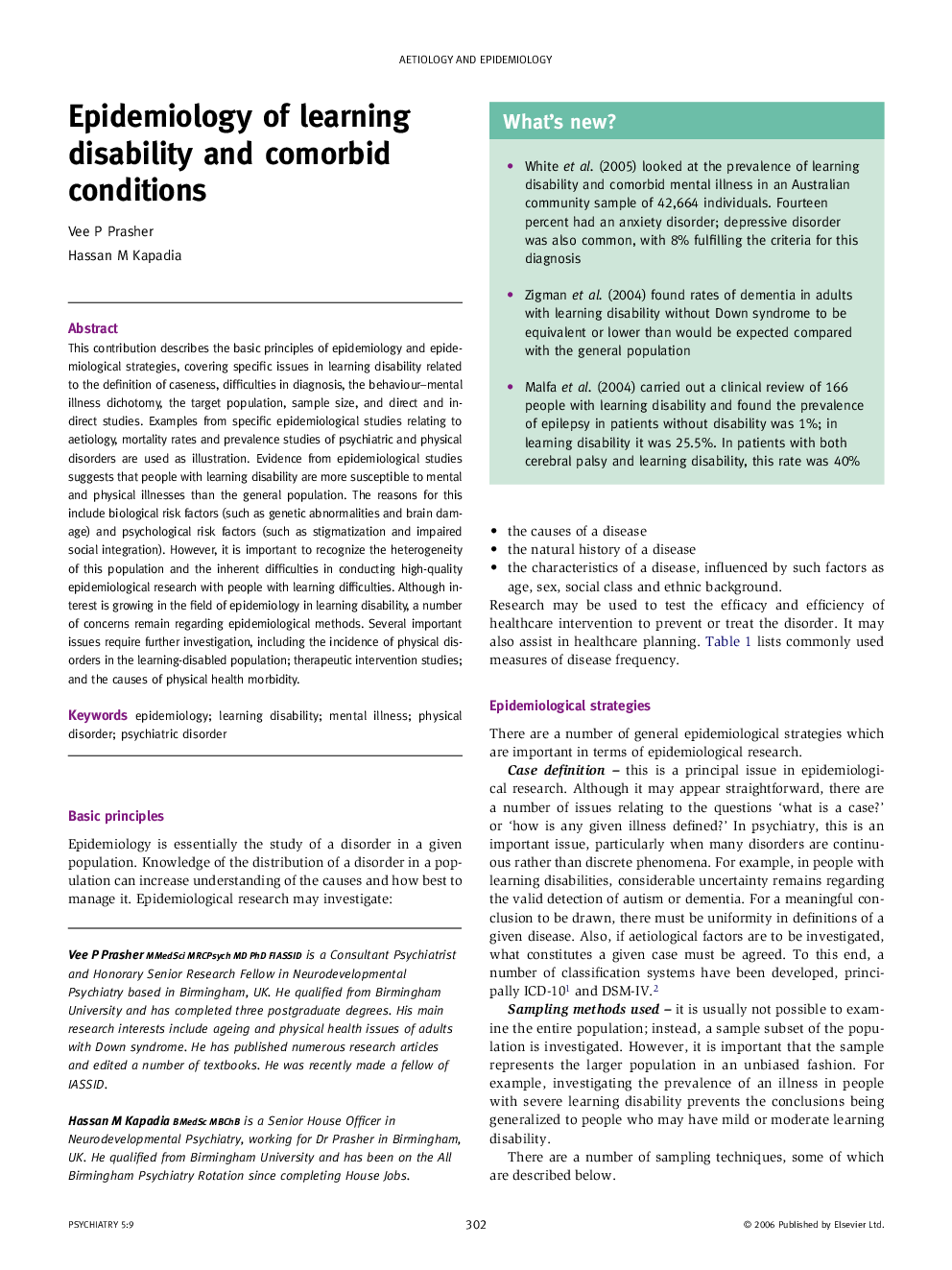| کد مقاله | کد نشریه | سال انتشار | مقاله انگلیسی | نسخه تمام متن |
|---|---|---|---|---|
| 4190291 | 1278168 | 2006 | 4 صفحه PDF | دانلود رایگان |

This contribution describes the basic principles of epidemiology and epidemiological strategies, covering specific issues in learning disability related to the definition of caseness, difficulties in diagnosis, the behaviour–mental illness dichotomy, the target population, sample size, and direct and indirect studies. Examples from specific epidemiological studies relating to aetiology, mortality rates and prevalence studies of psychiatric and physical disorders are used as illustration. Evidence from epidemiological studies suggests that people with learning disability are more susceptible to mental and physical illnesses than the general population. The reasons for this include biological risk factors (such as genetic abnormalities and brain damage) and psychological risk factors (such as stigmatization and impaired social integration). However, it is important to recognize the heterogeneity of this population and the inherent difficulties in conducting high-quality epidemiological research with people with learning difficulties. Although interest is growing in the field of epidemiology in learning disability, a number of concerns remain regarding epidemiological methods. Several important issues require further investigation, including the incidence of physical disorders in the learning-disabled population; therapeutic intervention studies; and the causes of physical health morbidity.
Journal: Psychiatry - Volume 5, Issue 9, September 2006, Pages 302–305